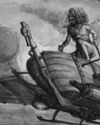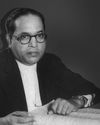
Hindu nationalism is generally defined as an ethno-religious movement. But it may have as much to do with social factors as with identity markers, as its last phase of expansion has been primarily a reaction to Mandal. Soon after the then prime minister, V P Singh, announced the implementation of the Mandal Commission report, Organiser wrote of “an urgent need to build up moral and spiritual forces to counter any fallout from an expected Shudra revolution”. And when Mandal II happened, the same newspaper argued that the “Congress-led-UPA government at the Centre is bent upon destroying the last bastion of merit…”. After the BJP was defeated in 2004, and again in 2009, it became urgent to hone a strategy that would enable it to come to power and prevent the deepening of policies that went against its Hindu nationalist ideology and the interests of its base.
The brand of national-populism that Narendra Modi had initiated in Gujarat was the perfect alternative. It could transcend caste barriers in the name of an existential defence of Hindus against threatening Others (by resorting to polarisation techniques) and attract OBCs and even Dalits, not only because of the polarisation but also because of the plebeianisation of the BJP, which used to be identified with the upper castes until then. Modi himself came from a backward caste, had developed the chaiwala narrative and pretended that he had been victimised by the English-speaking establishment of Delhi — a feeling many OBCs shared. After all, many of them had started to emancipate themselves after Mandal, but they had not succeeded in joining the middle class. Modi could exploit their frustration — all the more so as he promised to apply the “Gujarat model” for creating jobs.
Diese Geschichte stammt aus der March 2021-Ausgabe von The Modern Rationalist.
Starten Sie Ihre 7-tägige kostenlose Testversion von Magzter GOLD, um auf Tausende kuratierte Premium-Storys sowie über 8.000 Zeitschriften und Zeitungen zuzugreifen.
Bereits Abonnent ? Anmelden
Diese Geschichte stammt aus der March 2021-Ausgabe von The Modern Rationalist.
Starten Sie Ihre 7-tägige kostenlose Testversion von Magzter GOLD, um auf Tausende kuratierte Premium-Storys sowie über 8.000 Zeitschriften und Zeitungen zuzugreifen.
Bereits Abonnent? Anmelden

Who Is Afraid Of Scientific Temper?
The stories are very powerful. Over a period of time they gain a lot of traction. The places mentioned in the stories appear to be real and people attach a lot of meaning to them out of reverence. The symbols and signs used in the stories become core elements of propaganda. Soon it becomes a machinery that establishes a structure and with a body of evidence that is highly questionable. Not many try to challenge this because of its threatening stature. Who would dare to ask if the birthplace of Jesus or Ram exactly as it is claimed? Leave alone the historical, and archeological evidence that could support it.

The Woman and the Counter-Revolution
There is one copy with a title ‘The Woman and the Counter - Revolution’. There is another copy of the same text with a title, ‘The Riddle of the Woman’. The Editorial Board felt that this essay would be appropriate in this Volume rather than in the volume of ‘Riddles in Hinduism’ - Editors of ‘Dr. Babasaheb Ambedkar Writings and Speeches’

THE IX SCHEDULE CREATION AND ITS EFFICIANCY
In case, any property of the citizen is to be acquired compulsorily by the State, there was also a fundamental right, under Article 31,for the citizens to get compensation. Immediately after the commencement of the constitution,many States brought agrarian reforms by legislations. When those enactments were challenged, in spite of the saving clauses found in article 31, those laws were held void as they violated the fundamental right to property of the owners/ zamindars. One such case was Kameshwar singh Vs State of Bihar [ AIR 1951 Patna 91]. The Union Government, then invented a novel devise, not only to save all such laws which were already declared unconstitutional but also to save any such law that may be passed, in future, by legislatures.

Social Justice and Humanism
Once prejudice against nontheists fades away, religious favoritism is removed from government, humanists are appreciated for our kind and reason-based thinking, then humanists everywhere can begin to focus full-time on promoting our science-based, compassionate, and egalitarian vision for our world. But we can’t wait until such a day dawns; we must assert ourselves today to make a difference in as many ways as possible, even if we have not yet realized many of our longstanding goals. To delay action on other fronts, when action could improve lives, would be to negatively impact the fates of many. This isn’t an acceptable course.

Preface to the Communist Manifesto
‘Communist Manifesto’, released by Karl Marx and Friedrich Engels was for the first time translated and published in Tamil by Thanthai Periyar in ‘Kudi Arasu’ serially from 4th October 1931 to 2nd November 1931. Afterwards Periyar commenced his International tour on 13th December 1931 and returned on 8th November 1932. He visited various European, Asian and African countries. Of them his stay in Soviet Russia was from 14th February 1932 to 19th May 1932. While he was in Soviet Russia, he attended the May Day celebration as State Guest and witnessed Moscow March on 1st May 1932. While publishing the Tamil version of the Communist Manifesto Periyar wrote a Preface to it in Kudi Arasu. The English version of the preface is as follows:

Interpretation which impede a just social order
On May 5, the Supreme Court of India declared as unconstitutional a Maharashtra law which provided for reservation to the Maratha community in education and public employment in the State. Four judges of the five-judge Bench wrote separate opinions, from which three primary findings emanated.

Firm in unbelief
Bhagat Singh’s well-argued essays are evidence of his maturity

EXEMPLARY DRAVIDAM MODEL
In common parlance the term ‘Dravidam’ is associated with racial cum ethnical identity. The meaning of ‘Dravidam’ does not end with this historical fact. The meaning gets manifested more than that and is applicable to the whole of humankind. ‘Dravidam’ is not a dominating or suppressing identity. It is the glorification of humankind with humanistic adherence for peace and prosperity.

Corona Control - Surge of Superstition
All efforts are put in to combat the spread of second wave of corona pandemic. On one side all the constructive initiatives including the medical and other scientifically proven endeavours are being undertaken from the government side both the Centre and the States. On the other side, the mindset of the common people is not tuned to arrest the spread effectively. The public has to adhere to minimum efforts of wearing face masks, keeping safe distance with others and restricting the mobility and accessing public places unless it warrants. If not, the government has to announce a strict lockdown by which the economic activities would be affected that would lead to consequential effects on the livelihood.

Caste System
My dear protectors of castes and caste enthusiasts - through my editorial in the ‘Kudi Arasu’ issue of 16.10.1930, I had made it clear that the castes classified long ago into four grades later multiplied into 4000 castes because of one caste mingling again and again with another caste. Quoting from the caste-related evidence of Brahmins, we had also specified that all such multiplied castes are called the ‘panchamas’. And yet some of our people who call themselves ‘velalars’ (agriculturists) assume identity as ‘Sarsudhras’, though they agree with the four grade classification as Brahmins, kshatriyas, vysyas and sudras.